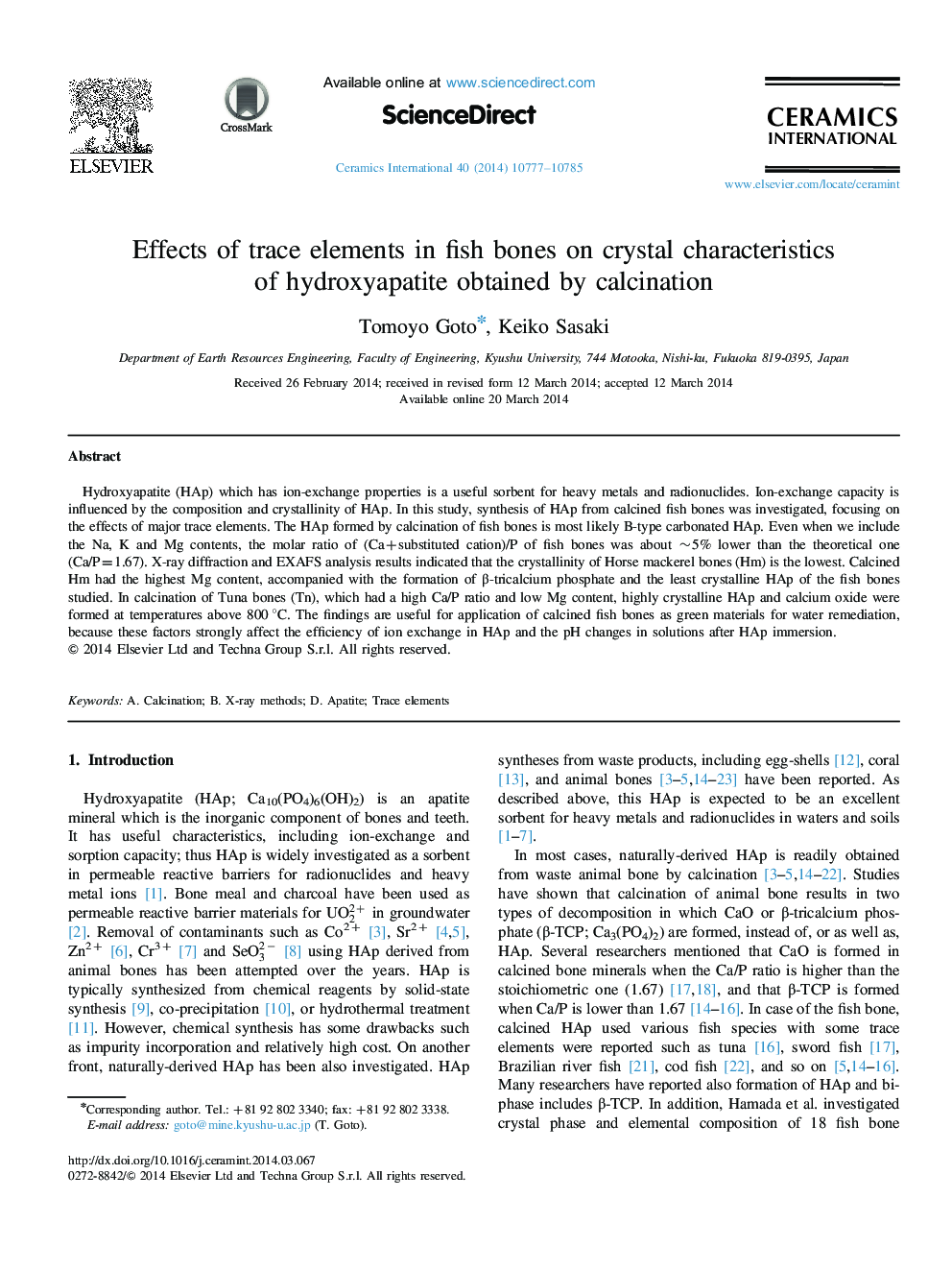| کد مقاله | کد نشریه | سال انتشار | مقاله انگلیسی | نسخه تمام متن |
|---|---|---|---|---|
| 1461060 | 989614 | 2014 | 9 صفحه PDF | دانلود رایگان |
Hydroxyapatite (HAp) which has ion-exchange properties is a useful sorbent for heavy metals and radionuclides. Ion-exchange capacity is influenced by the composition and crystallinity of HAp. In this study, synthesis of HAp from calcined fish bones was investigated, focusing on the effects of major trace elements. The HAp formed by calcination of fish bones is most likely B-type carbonated HAp. Even when we include the Na, K and Mg contents, the molar ratio of (Ca+substituted cation)/P of fish bones was about ~5% lower than the theoretical one (Ca/P=1.67). X-ray diffraction and EXAFS analysis results indicated that the crystallinity of Horse mackerel bones (Hm) is the lowest. Calcined Hm had the highest Mg content, accompanied with the formation of β-tricalcium phosphate and the least crystalline HAp of the fish bones studied. In calcination of Tuna bones (Tn), which had a high Ca/P ratio and low Mg content, highly crystalline HAp and calcium oxide were formed at temperatures above 800 °C. The findings are useful for application of calcined fish bones as green materials for water remediation, because these factors strongly affect the efficiency of ion exchange in HAp and the pH changes in solutions after HAp immersion.
Journal: Ceramics International - Volume 40, Issue 7, Part B, August 2014, Pages 10777–10785
